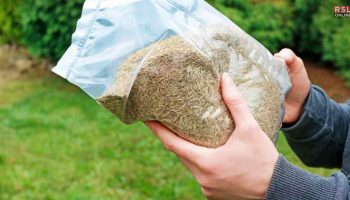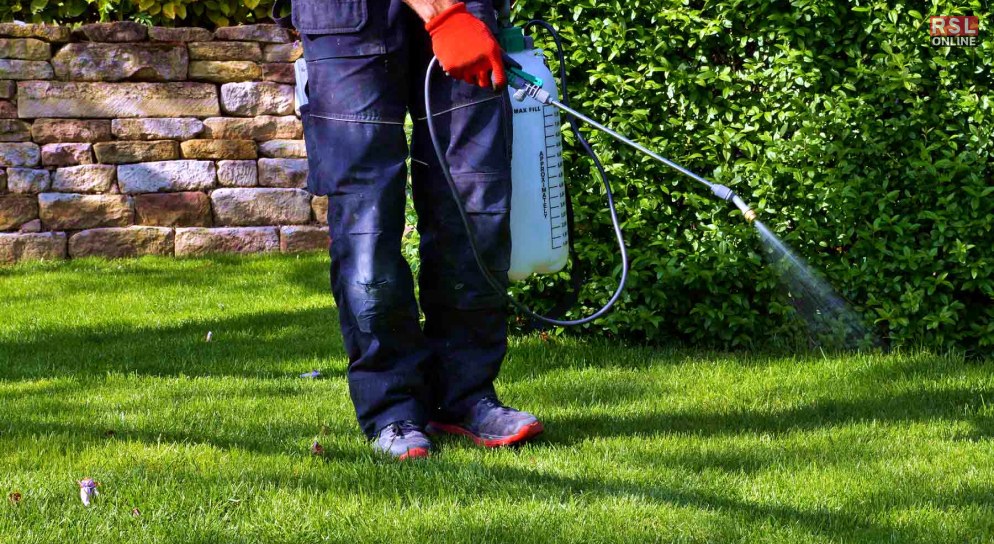Are you tired of looking at bald patches and uneven growth in your lawn? Do you dream of a lush, green carpet of grass but dread the labor-intensive process of traditional seeding? Well, you’re in luck because there’s a revolutionary solution that’s changing the way we achieve beautiful lawns – spray-on grass seed.
In this article, I will be diving into the world of spray-on grass seed, exploring what it is, how it works, its benefits, and some handy tips to get your lawn looking like a million bucks. So, if that is what you are looking for, then I have you covered! Keep on reading this article till the end to learn more…
What Is Spray-On Grass Seed?
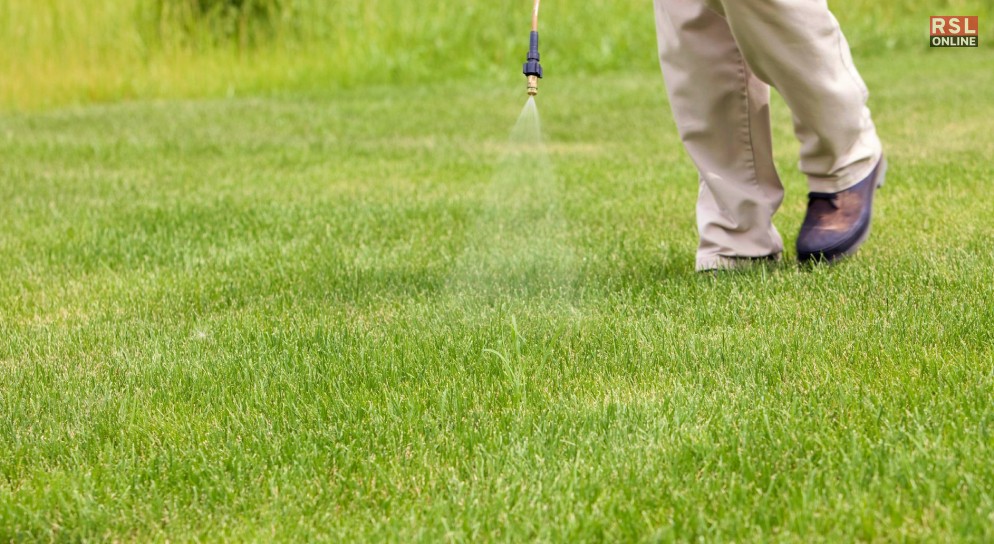
Spray-on grass seed, also known as hydroseeding or hydromulching, is a modern and innovative approach to lawn seeding that has gained popularity for its efficiency and effectiveness. This method represents a departure from traditional seeding practices, offering a solution to common lawn woes, such as patchy growth and uneven coverage.
At its core, spray-on grass seed involves creating a specialized slurry or mixture that includes not only grass seed but also essential components like water, fertilizer, and mulch. These ingredients are combined to form a thick, nutrient-rich blend that is loaded into a hydroseeding machine or sprayer.
Once the mixture is prepared, it’s time to apply it to your lawn. The hydroseeding machine then sprays the slurry evenly across the designated area, ensuring that the grass seed comes into direct contact with the soil. This direct soil-seed contact is crucial for successful germination.
Understanding Spray-On Grass Seed
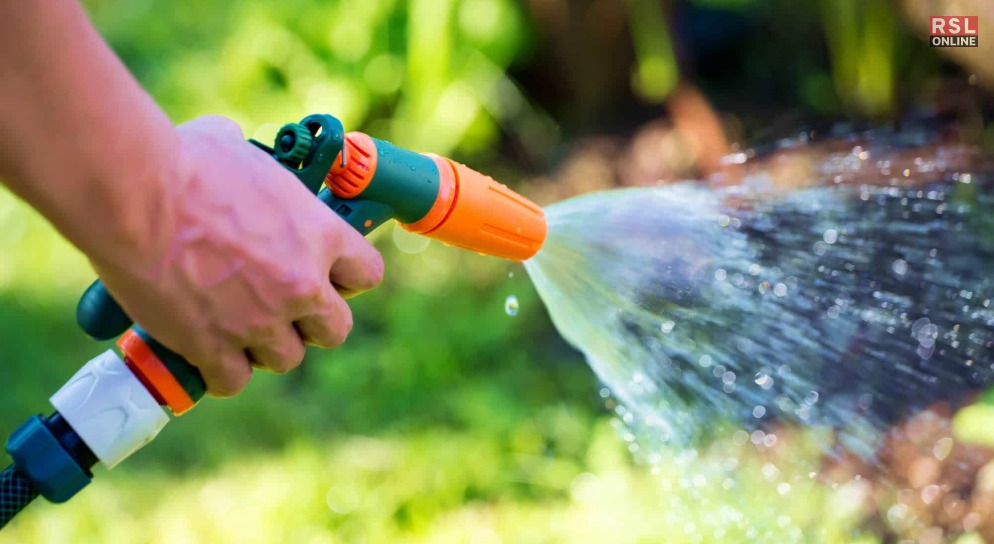
In essence, Spray-on grass seed, is a method of seeding your lawn by spraying a mixture of grass seed, water, fertilizer, and mulch onto the soil. This concoction creates an ideal environment for grass seed germination and growth.
Spray-on grass seed creates a nurturing environment for your grass seed, accelerating germination and promoting even growth. This method simplifies the process of seeding your lawn, offering an efficient and effective way to achieve that beautiful, vibrant green carpet you’ve always desired. Let’s take a deeper look at this and how it works…
What Are Included In This?
The magic of spray-on grass seed lies in the combination of these elements. Here’s a breakdown of their roles:
1. Grass Seed: This is, of course, the star of the show. It’s the key ingredient that will eventually grow into a lush lawn. By suspending the seeds in the slurry, you ensure that they are evenly distributed across your lawn.
2. Water: Adequate moisture is essential for seed germination. The water in the slurry not only initiates the germination process but also keeps the soil consistently moist, providing the seeds with the ideal conditions for growth.
3. Fertilizer: The slurry contains fertilizers that supply essential nutrients to the emerging grass seedlings. This eliminates the need for additional fertilization during the early stages of lawn establishment.
4. Mulch: The mulch component in the slurry serves multiple purposes. It acts as a protective blanket, preventing soil erosion and keeping the seeds in place. Additionally, it helps retain moisture, which is vital for germination and early growth.
How Does Spray On Grass Seed Work?
The process is quite straightforward. A slurry is prepared by combining grass seed with water, fertilizer, and mulch. This mixture is then loaded into a specialized sprayer. The sprayer evenly disperses the slurry across the designated area, ensuring that the grass seed makes direct contact with the soil.
As the grass seed sprouts and grows, the mulch helps retain moisture, preventing soil erosion and providing essential nutrients to nourish the developing grass. This method not only promotes faster germination but also enhances the overall health and resilience of your lawn.
The Benefits Of Spray-On Grass Seed
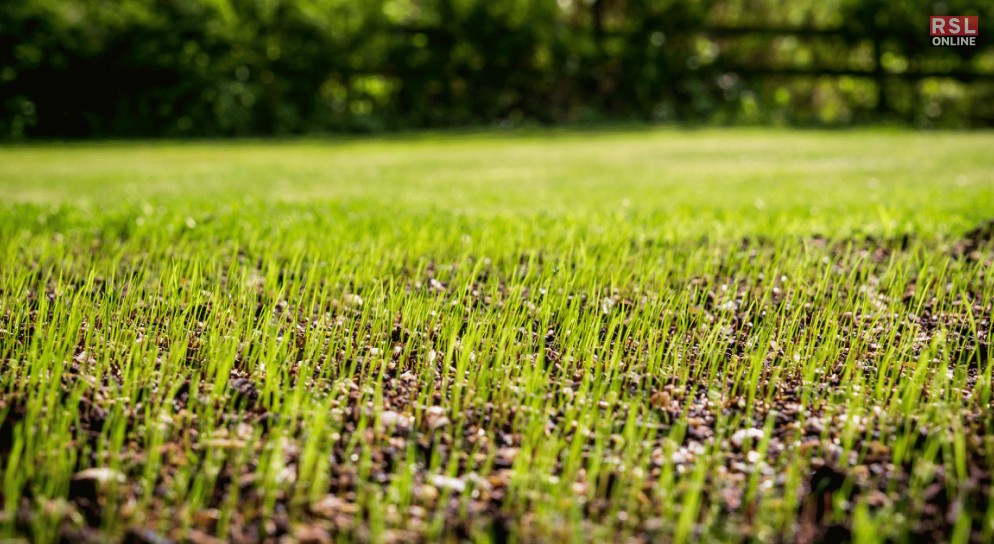
Now, let’s dive deeper into the benefits of Spray-on grass seed. Understanding these advantages will help you appreciate why this method is gaining popularity among homeowners and landscapers alike.
1. Rapid Germination
One of the standout benefits of spray-on grass seed is its ability to facilitate rapid germination. Unlike traditional seeding methods, where seeds are often left exposed to the elements, hydroseeding creates an optimal environment for seed growth.
When the grass seed is mixed with water, fertilizer, and mulch to form a slurry, it gains several advantages. First, it’s protected from external factors like wind, birds, or heavy rain that could disrupt seed placement. Second, the moisture provided by the slurry jumpstarts the germination process. Third, the mulch layer acts as a protective barrier, retaining moisture and shielding the seeds from harsh sunlight. These combined factors create an ideal germination environment.
The result? You can expect to see green shoots emerging in as little as one to two weeks after hydroseeding, depending on the grass variety and local conditions. This rapid growth is particularly appealing to homeowners who want to enjoy a lush, green lawn sooner rather than later.
2. Even Coverage
Uneven, patchy lawns can be a common frustration for those who have tried traditional seeding methods. Hand-seeding often leads to inconsistent distribution of seeds, resulting in bare spots and clumps of grass in various areas. This not only looks unsightly but also requires additional work to correct.
Spray-on grass seed eliminates this problem by ensuring even coverage across the entire lawn. The specialized hydroseeding equipment disperses the seed mixture uniformly, leaving no room for gaps or over-seeding in certain areas. This uniform distribution leads to a beautifully even lawn that not only looks better but also grows more consistently.
Homeowners no longer need to worry about meticulously spreading seeds by hand, achieving uneven results, or needing to go back and fix trouble spots. Hydroseeding simplifies the process, ensuring that every inch of your lawn receives the same treatment.
3. Soil Erosion Control
Soil erosion is a common issue, especially on sloped or uneven terrain. Traditional seeding methods may not adequately address this concern, as seeds can easily wash away during heavy rains, leaving exposed soil vulnerable to erosion.
Spray-on grass seed, on the other hand, actively combats soil erosion. The mulch component of the seed mixture plays a critical role in this regard. As the grass seed sprouts and establishes roots, the mulch helps hold the soil in place. It creates a protective layer that prevents soil from being carried away by rainwater or wind.
By stabilizing the soil and reducing erosion, hydroseeding contributes to the long-term health of your lawn. It ensures that the grass has a secure foundation to grow on, leading to a more robust and resilient lawn.
4. Customizable Blend
One of the appealing aspects of hydroseeding is the ability to customize the grass seed blend to suit your specific needs and preferences. Different grass varieties thrive in different climates, soil types, and light conditions. With spray-on grass seed, you have the flexibility to choose the grass type that best suits your location and desired lawn aesthetics.
For instance, if you live in a region with cold winters, you can select cool-season grasses like Kentucky bluegrass or fescue. On the other hand, if you’re in a warmer climate, you might opt for warm-season grasses like Bermuda or Zoysia. Hydroseeding allows you to create a tailored blend that’s perfectly suited to your lawn’s unique requirements.
Moreover, you can mix multiple grass varieties to create a custom blend that combines the strengths of each type. This approach can enhance your lawn’s appearance and resilience, as it adapts to varying conditions throughout the year.
5. Fertilizer Included
Traditional seeding often requires homeowners to apply fertilizers separately to provide essential nutrients for grass growth. This can be an additional step and expense in the lawn establishment process.
Hydroseeding simplifies this aspect by incorporating fertilizers into the seed mixture. When the slurry is sprayed onto the soil, it contains all the nutrients the grass seeds need to thrive. This eliminates the need for separate fertilizer applications during the initial stages of lawn establishment.
The inclusion of fertilizers not only saves you time and effort but also ensures that the young grass plants receive the necessary nutrients right from the start. This contributes to healthier and more vigorous growth.
6. Reduced Weeds
A thick, healthy lawn is a natural deterrent to weeds. By establishing a dense grass cover early on, spray-on grass seed reduces the opportunity for weeds to take root and flourish in your lawn.
In contrast, when lawns have bare spots or thin grass coverage, weeds often find the space and nutrients they need to grow. This leads to more extensive and time-consuming weed control efforts down the road.
With hydroseeding, the rapid and even growth of grass provides a natural defense against weed invasion. As the grass matures, it forms a tight-knit network that leaves little room for weeds to establish themselves. Consequently, you’ll spend less time and effort battling unwanted plants on your lawn.
In conclusion, Spray-on grass seed offers a range of compelling benefits that make it an attractive choice for achieving a lush, healthy lawn. Its rapid germination, even coverage, erosion control, customizability, included fertilizers, and weed-reducing properties set it apart from traditional seeding methods.
Tips For Successful Spray-On Grass Seeding
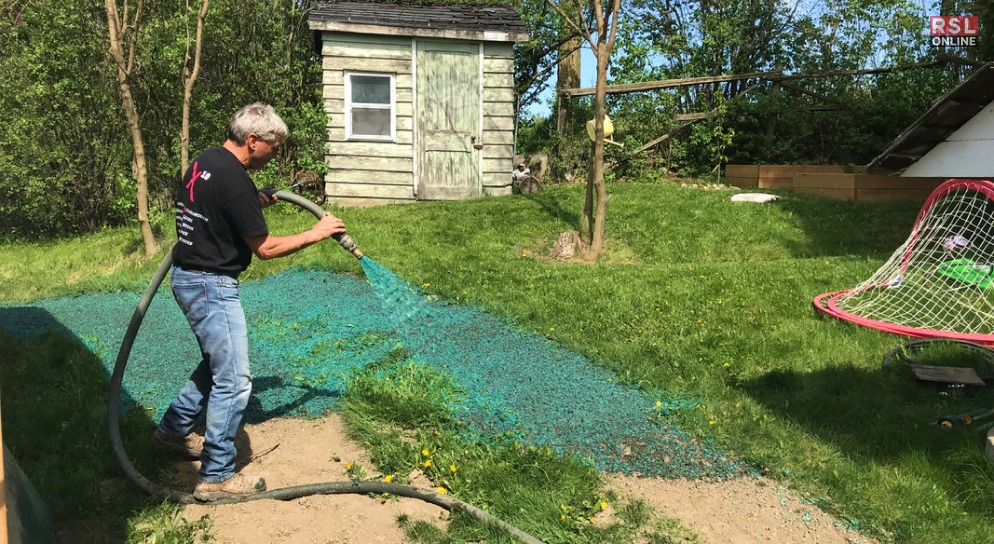
Let’s dive deeper into the essential tips for achieving successful spray-on grass seeding. These tips will help you maximize the benefits of this innovative lawn seeding method and ensure your lawn flourishes with lush, green grass.
1. Choose The Right Time
Timing is a critical factor when it comes to spray-on grass seeding. The success of your lawn largely depends on when you decide to hydroseed. Here’s why timing matters:
Early Fall or Spring: Early fall and spring are generally the best times for hydroseeding. During these seasons, the weather is typically mild, and there’s adequate moisture in the soil. These conditions create an ideal environment for seed germination and initial grass growth.
Avoid Extreme Temperatures: It’s crucial to avoid extreme heat or cold when hydroseeding. High temperatures can lead to excessive evaporation, causing the soil to dry out quickly. Conversely, freezing temperatures can hinder seed germination. Aim for temperatures between 60°F and 75°F (15°C to 24°C) for optimal results.
2. Prepare The Soil
Proper soil preparation is a fundamental step in ensuring the success of your spray-on grass seeding project. Here’s what you need to do:
Remove Debris: Start by removing any debris, such as rocks, branches, or leaves, from the area where you plan to hydroseed. Clearing the surface of the soil ensures that the grass seed mixture makes direct contact with the earth.
Weed Control: Eliminate existing weeds from the area. Weeds can compete with your new grass for nutrients, sunlight, and space. You can use herbicides or manual weed removal methods, but ensure that no weeds are left behind.
Loosen The Soil: Use a garden fork or a tiller to loosen the top layer of soil. Aerating the soil improves its structure and creates a better seedbed for the grass seed to establish itself. Loosening the soil also helps with water penetration and root growth.
Level The Surface: Smooth out the soil surface to ensure an even distribution of the seed mixture. Rake the soil to remove any high or low spots, creating a uniform surface for hydroseeding.
3. Properly Water Your Lawn
Water is a crucial element in the success of your spray-on grass seeding project. Adequate moisture is necessary for seed germination and the early stages of grass growth. Follow these watering guidelines:
Initial Watering: After the hydroseeding application, water the area thoroughly. The goal is to saturate the soil and the seed mixture without causing runoff. Use a gentle spray or sprinkler system to distribute water evenly.
Consistent Moisture: Maintain consistent soil moisture in the days and weeks following hydroseeding. The soil should remain consistently moist, but not waterlogged. Watering too much can wash away the seed mixture or lead to fungal issues.
Frequency: Depending on weather conditions, you may need to water the hydroseeded area 2-3 times a day, especially during the first two weeks. As the grass starts to grow, you can reduce the frequency but continue to ensure consistent moisture.
4. Be Patient
While spray-on grass seed accelerates the germination process, it’s essential to be patient and allow your lawn to develop naturally. Here’s what to keep in mind:
Germination Time: The time it takes for grass seed to germinate can vary depending on the grass variety and local conditions. In ideal circumstances, you may start seeing green shoots in as little as one to two weeks. However, it can take longer, so patience is key.
Avoid Premature Mowing: Resist the temptation to mow your new grass too soon. Premature mowing can damage the young grass shoots and hinder their growth. Wait until the grass reaches a height of about 3 inches before mowing, and be sure to use a sharp mower blade.
5. Consider Professional Help
While hydroseeding can be a DIY project, there are instances where it’s beneficial to enlist the expertise of a professional hydroseeding contractor:
Large Areas: If you’re hydroseeding a large area, such as a spacious backyard or a commercial property, professionals have the equipment and experience to handle the job efficiently.
Challenging Terrain: Hydroseeding on steep slopes or uneven terrain can be tricky. Professionals can navigate such challenges safely and effectively.
Custom Blends: If you’re looking for a custom grass seed blend tailored to your specific requirements, hydroseeding professionals can provide expert guidance.
Experienced Application: Professional contractors are skilled at achieving even coverage and ensuring that the grass seed mixture adheres well to the soil.
Choosing The Perfect Grass For Your Spray-On Grass Seed
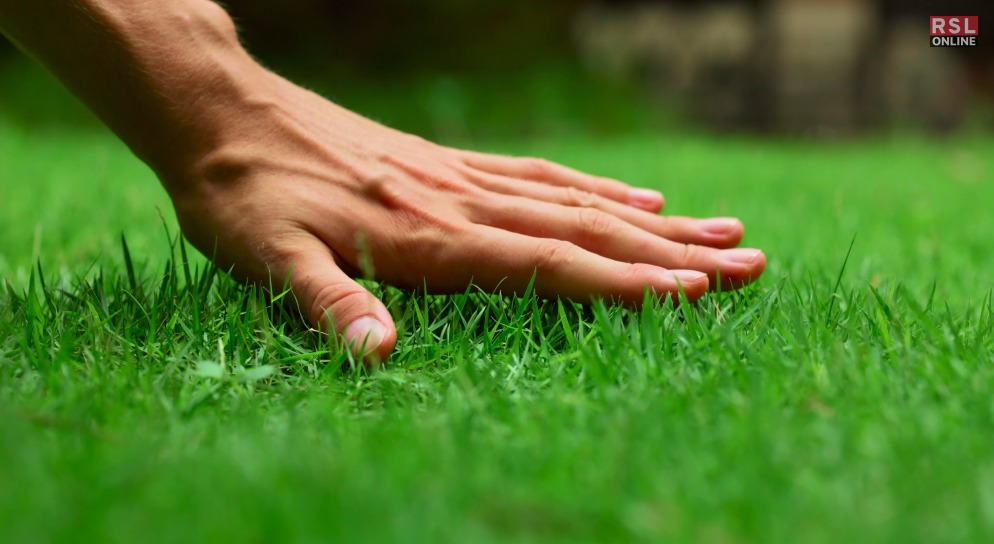
You’ve decided to transform your lawn using spray-on grass seed, but now comes the critical question: what type of grass should you plant? Your choice of grass can make a significant difference in the appearance and maintenance of your lawn. In this guide, I will explore the various types of grass you can plant with spray-on grass seed, providing you with insights and examples to help you make the right choice.
Cool-Season Grasses
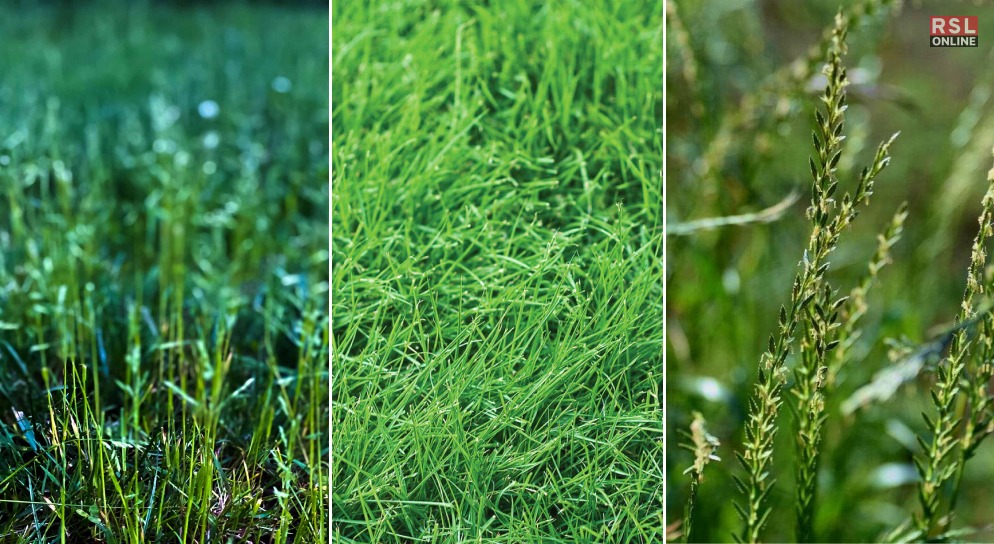
Cool-season grasses are well-suited to regions with cooler temperatures and distinct seasons. They thrive in spring and fall when temperatures are milder, making them an excellent choice for northern climates.
1. Kentucky Bluegrass (Poa Pratensis)
Kentucky bluegrass is the quintessential cool-season grass known for its lush, emerald-green appearance. It’s a popular choice for lawns, parks, and golf courses due to its fine texture and excellent wear tolerance. Kentucky bluegrass establishes itself well with spray-on grass seed and forms a dense, carpet-like lawn.
2. Fine Fescue (Festuca Spp.)
Fine fescue is a group of grass species that includes creeping red fescue, chewings fescue, and sheep fescue, among others. These grasses are known for their fine blades and shade tolerance. They’re often used in mixtures with other grass types to create a more resilient and diverse lawn.
3. Perennial Ryegrass (Lolium Perenne)
Perennial ryegrass is prized for its quick germination and lush, green appearance. It’s an excellent choice for overseeding existing lawns or as part of a grass seed blend. It forms a dense, attractive lawn and is well-suited to high-traffic areas.
Warm-Season Grasses
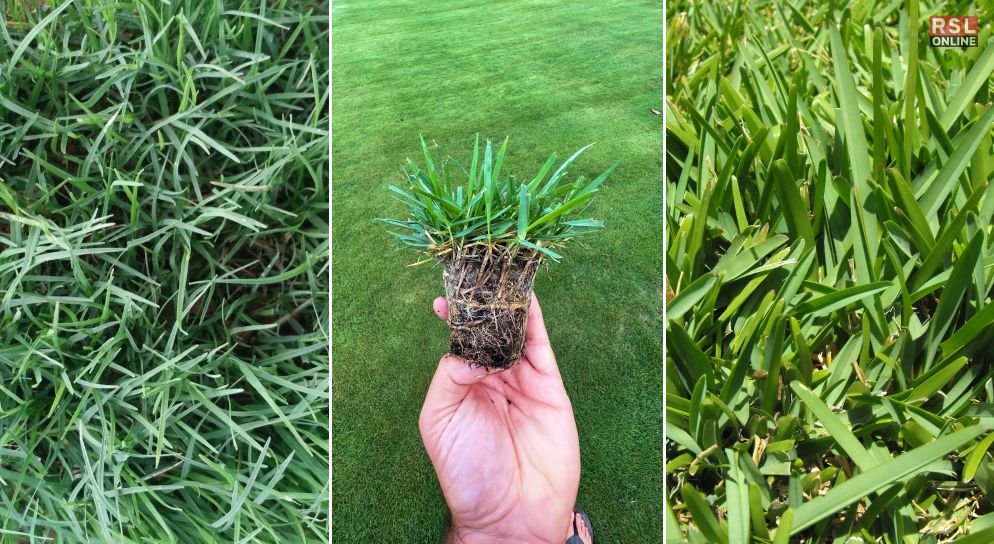
Warm-season grasses thrive in regions with hot summers and mild winters. They are most active during the summer months and go dormant in the winter, making them ideal for southern climates.
1. Bermuda Grass (Cynodon Dactylon)
Bermuda grass is a popular choice for warm-season lawns, known for its durability and heat tolerance. People often use it on sports fields and golf courses due to its ability to withstand heavy use. While it can be established with spray-on grass seed, it may require a longer growing season to reach its full potential.
2. Zoysia Grass (Zoysia Spp.)
Zoysia grass is popular for its dense, carpet-like growth and drought tolerance. It’s an excellent choice for regions with hot, dry summers. While it may take a bit longer to establish compared to other grasses, the result is a low-maintenance, visually appealing lawn.
3. St. Augustine Grass (Stenotaphrum Secundatum)
St. Augustine grass is a warm-season grass known for its lush, broad blades and shade tolerance. It thrives in coastal regions and is often chosen for its salt tolerance, making it suitable for coastal properties. Planting with spray-on grass seed can create a thick, vibrant lawn.
Transition Zone Grasses
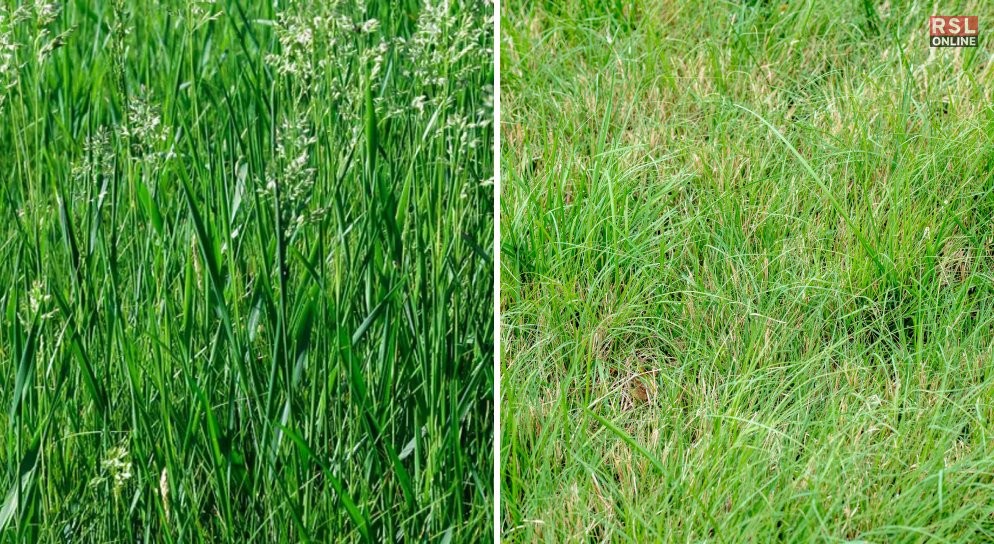
If you live in an area that experiences a mix of both warm and cool temperatures, you’re in what’s known as the “transition zone.” Choosing the right grass for this region can be a bit tricky, but several grass types can thrive here.
1. Tall Fescue (Festuca Arundinacea)
Tall fescue is popular for its adaptability to a wide range of climates. People often use it in the transition zone for its heat tolerance and ability to withstand colder temperatures. Tall fescue grass forms a dense, coarse-textured lawn that can handle moderate foot traffic.
2. Buffalograss (Buchloë Dactyloides)
Buffalograss is a warm-season grass that can also tolerate cooler temperatures. It’s drought-resistant and low-maintenance, making it an eco-friendly choice for lawns in the transition zone. Buffalograss creates a soft, fine-textured lawn that’s perfect for those looking to reduce water usage.
Read More: The Role Of Colombian Coffee In Sustainable Farming Practices
Factors To Consider When Choosing Grass
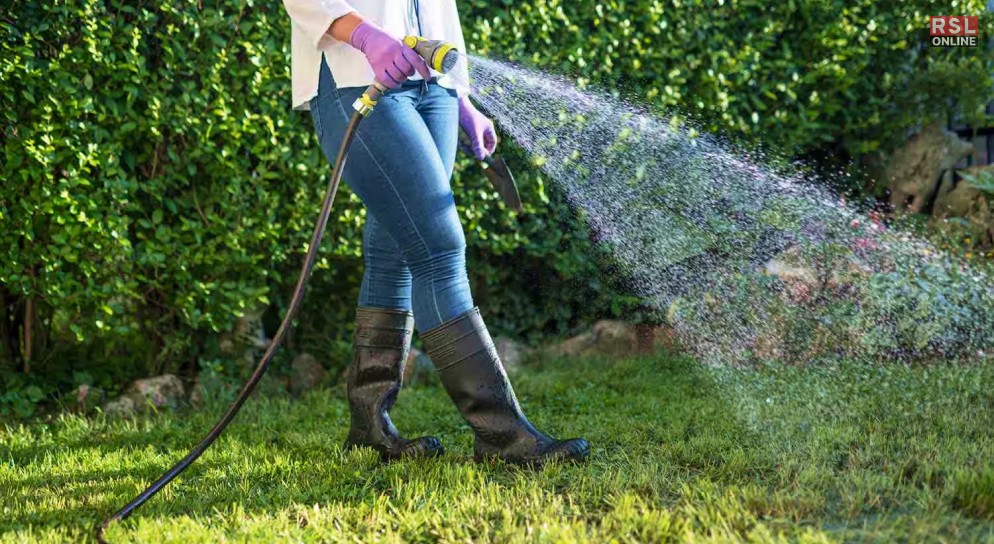
Now that you’ve seen the various types of grass suitable for spray-on grass seed, let’s delve into some essential factors to consider when making your decision:
1. Climate: Consider your region’s climate, including temperature, rainfall, and seasonal changes. Choose a grass type that’s well-suited to your local conditions.
2. Lawn Usage: Think about how you plan to use your lawn. Do you have kids or pets who will be running around? Will it be primarily for aesthetics or recreation?
3. Shade Tolerance: Assess the amount of sunlight your lawn receives. Some grasses are better at thriving in shaded areas, while others require full sun.
4. Maintenance Level: Determine how much time and effort you’re willing to invest in lawn care. Some grasses require more maintenance, while others are low-maintenance options.
5. Water Availability: Consider your water source and availability. Some grasses are more drought-tolerant, which can be beneficial in regions with water restrictions.
Bonus: Mixing Grass Types For Spray On Grass Seeds!
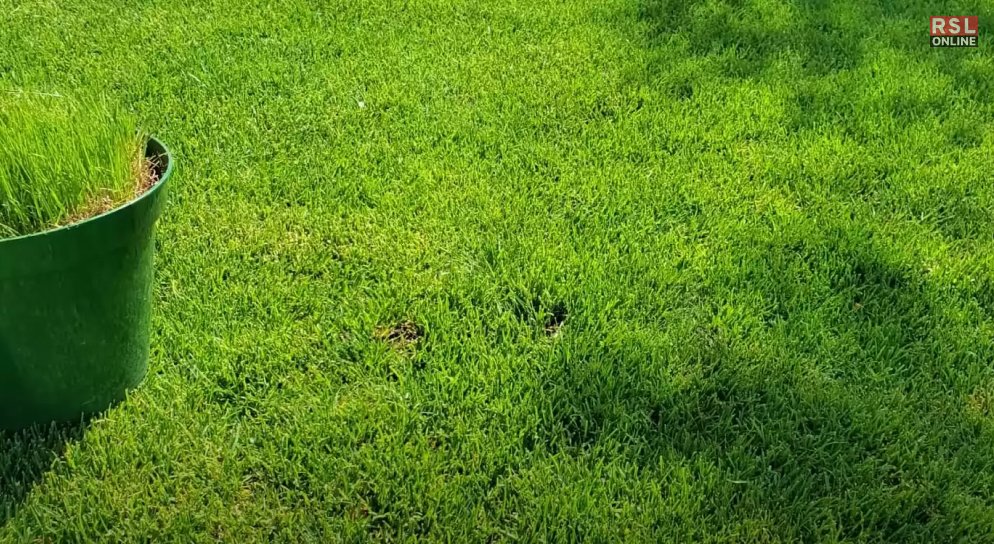
In many cases, homeowners opt for a blend of grass types to capitalize on the strengths of each variety. Mixing cool-season and warm-season grasses or combining different species within the same category can provide a more resilient, adaptable lawn.
For example, a mixture of Kentucky bluegrass and perennial ryegrass can create a visually appealing lawn that’s both lush and durable. In the transition zone, combining tall fescue with warm-season grass like Bermuda or Zoysia can offer the best of both worlds.
Bottom Line: Bid Adieu To Your Traditional Deesing Hassles!
Spray-on grass seed, or hydroseeding, offers a fast, efficient, and effective way to achieve the lawn of your dreams. With its rapid germination, even coverage, erosion control, and customizability, it’s no wonder this method is gaining popularity among homeowners.
So, if you’re ready to bid farewell to bald patches and uneven growth, consider giving spray-on grass seed a try. With proper care and attention, you’ll soon be the proud owner of a lush, green lawn that’s the envy of your neighborhood. Say goodbye to traditional seeding hassles and hello to the green revolution in lawn care!
Read Also:













